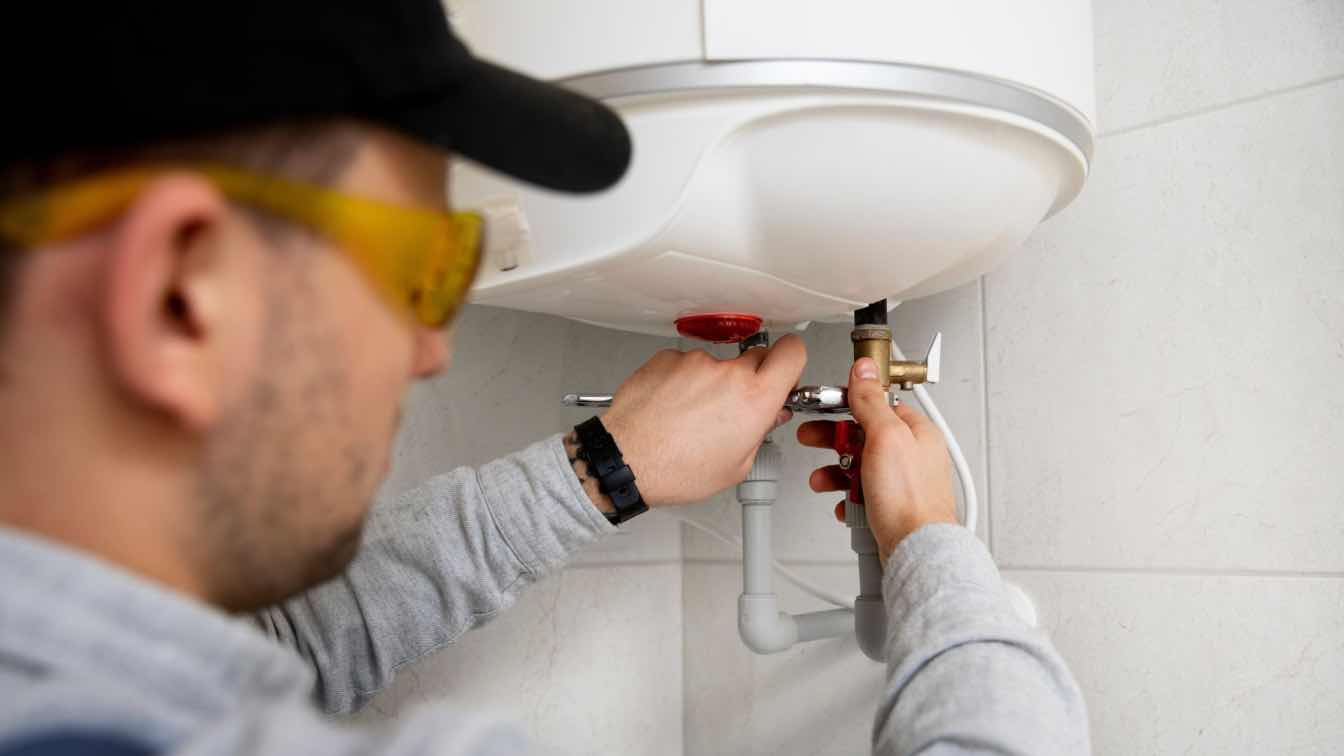Your water heater works tirelessly behind the scenes, providing hot showers and cozy laundry days. But lurking within its tank is a silent saboteur: sediment build-up. Minerals in water that you get over time settle at the bottom of the tank. In that matter, less energy is being used, and it is mostly the cause of a lower life span in the unit. The good news? With proactive water heater maintenance tips and timely action, you can protect your system from this common issue. Whether you’re troubleshooting strange noises or looking to clean water heater components, this guide will help you tackle sediment head-on and know when to call local experts in water heater services like Fuse Service for backup.
How Does Your Water Heater Operate? The Enigma of Sediment Deposition
Your water's minerals, especially calcium and magnesium, are the first to build up sediment. Minerals are destroyed by the heat and fall to the bottom of the tank. This coating becomes thicker over months or years, forming a barrier between the water and the burner or heating element. The result? Your system works harder to heat the same amount of water, leading to:
Reduced efficiency: higher energy bills.
Overheating: the burner strains to penetrate the sediment layer.
Corrosion: trapped moisture accelerates rust.
Additionally, tankless water heaters are not exempt. Mineral deposits can choke pipes or heat exchangers even when they don't store water. Regular water heater maintenance tips, like flushing the tank, are critical to stopping sediment in its tracks.
How to Tell if Sediment’s Already Sneaking In
Don’t wait for a full-blown breakdown! Watch for these red flags:
1. Rumbling or popping noises: Sediment traps heat, causing water to boil and create steam bubbles that “explode” against the debris.
2. Longer wait times for hot water: A sediment-clogged tank takes longer to heat water.
3. Lukewarm water: If your showers turn cold too fast, sediment might be blocking heat distribution.
4. Discolored water: Rusty or gritty water signals corrosion or loose sediment in the tank.
5. Higher energy bills: Inefficient heating forces your system to consume more fuel.
If you spot these signs, act fast. Minor sediment can often be resolved with DIY steps, but persistent issues may require professional water heater repair to avoid irreversible damage.
How to Beat Sediment Before It Starts: Simple Steps You Can Take
Prevention is the best defense. Follow these water heater maintenance tips to keep sediment at bay:
1. Flush the tank annually
Draining your water heater removes loose sediment. Here’s how:
Turn off the power (or gas) and cold water supply.
Attach a hose to the drain valve and empty the tank into a floor drain or bucket.
Refill the tank and repeat until the water runs clear.
2. Test your anode rod
The anode rod attracts corrosive elements, protecting your tank from rust. Check it yearly and replace it if it’s more than 50% corroded.
3. Install a water softener
If you have hard water, a softener reduces mineral content before it enters the heater.
4. Adjust the temperature
Keep the thermostat at 120°F–140°F. Too hot accelerates mineral separation; too cool encourages bacterial growth.
5. Inspect the pressure relief valve
Test this valve annually to ensure it’s functioning. Sediment can clog it, creating dangerous pressure build-up.
Refer to your owner's manual for detailed instructions on how to clean the water heater, or give professionals a call for practical assistance.
Why It’s Worth the Effort: The Big Benefits
Investing time in sediment prevention pays off in spades:
Lower energy bills: A clean heater operates up to 30% more efficiently.
Extended lifespan: Reduce wear and tear to add years to your unit.
Fewer repairs: Sediment-free systems face fewer leaks, cracks, and burner issues.
Consistent hot water: Say goodbye to lukewarm surprises.
Regular maintenance also helps you spot small issues before they demand costly water heater repair.
When DIY Isn’t Enough: Call in the Pros
Some sediment battles require backup. Call local experts in water heater services like Fuse Service if you encounter:
Persistent sediment: If flushing doesn’t resolve noises or heating issues, there may be a severe build-up.
Leaks or cracks: Sediment-induced corrosion can damage the tank beyond DIY fixes.
No hot water: A faulty heating element or thermostat may need professional calibration.
Uncertainty: If working with plumbing connections, electrical parts, or gas lines makes you uneasy.
Water heater replacement, repair, and maintenance are the areas of expertise for the certified specialists at Fuse Service. With same-day service and upfront pricing, they’ll restore your system’s efficiency and peace of mind.
In Conclusion
While sediment accumulation may be unavoidable, a broken water heater is not. Simple water heater maintenance tips, such as yearly flushing and anode rod inspections, will protect the longevity and functionality of your system. If the process seems too much to handle, remember that local water heater service experts like Fuse Service are just a phone call away.
Don’t let sediment steal your hot showers or inflate your bills. Take action today to keep your water heater clean, efficient, and ready for whatever life throws at it.





